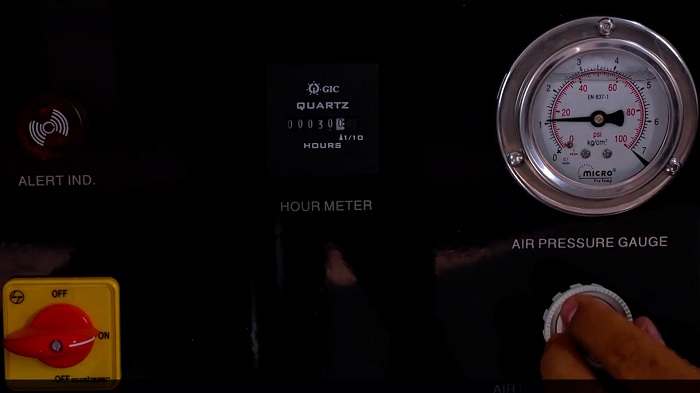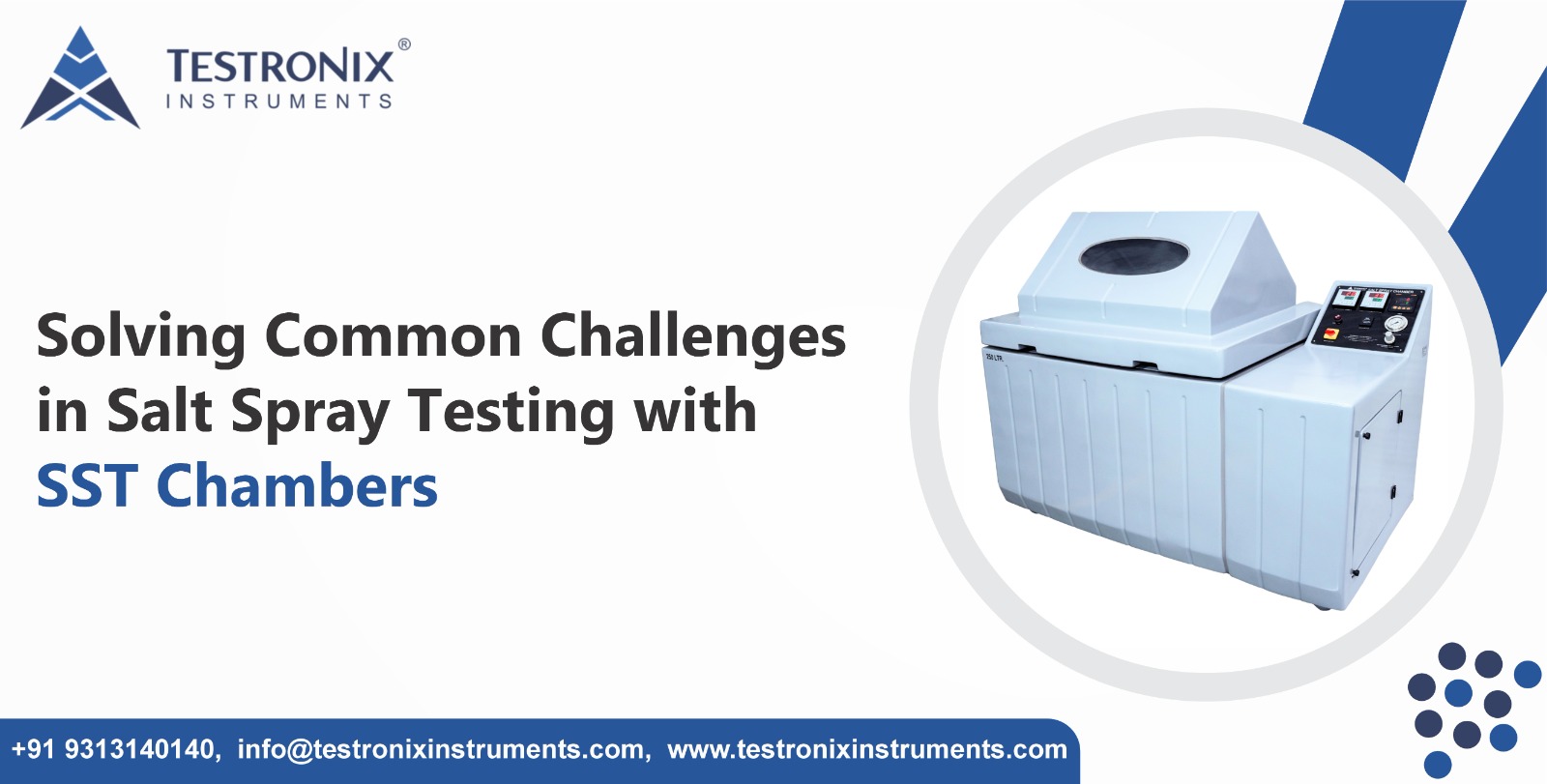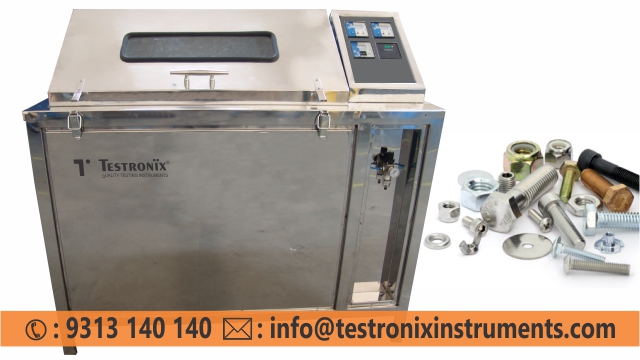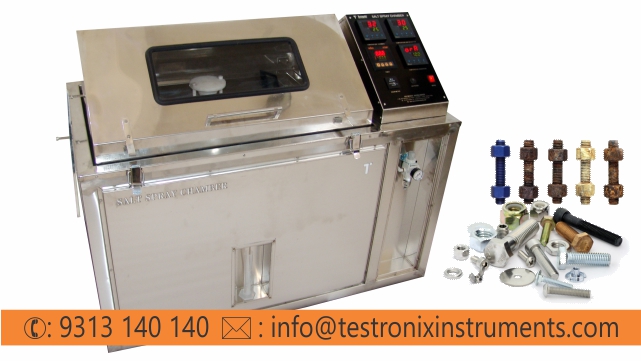Oh, corrosion. The silent killer of metals and coatings! One day your shiny metal is gleaming, and the next, it's like it's been feasting on a steady diet of salt and moisture. But worry not—salt spray testing (SST) is here to save the day (and your product).
But wait—before we start thinking SST is all roses and rainbows, let's talk about the real deal. Of course, like any testing process, salt spray testing has its concerns. Like frequently outputted results, complicated set-ups and whole huge lists of variables to consider. But fear not because here, we unveil even these issues, and spoiler alert, the Salt Spray Chamber is the MVP of this story.
Challenge # 1: The Bane of Every Engineer's Life: Unreliable Outcome
You have set up your test. You have your salt solution in place but the outcome of the results. What seems to be going on? This is one of the most common problems many may face when conducting a salt spray test. It is as if you have always had this great pancake recipe. You try making it twice. One pancake out is fluffy; the other. flat, or let's just say something not edible in any way at all.
Standardization is the key to unlocking this. The Salt Spray Test Chamber, particularly the SST variant, provides the kind of controlled environment that will see every test as identical as possible. SST chambers ensure spray distribution is consistent and uniform, meaning every part of your sample gets treated equally. No favorites here!
Pro tip: For the chamber to achieve consistent results, regular calibration and maintenance are essential. And if you are not calibrating you are just wasting your time on that pancake recipe!
Challenge #2: "I Can't Even Get the Temperature Right!"
Well, at least you know now that, with or without calibration, temperature control is another layer of complexity in getting perfect pancakes!
Temperature control is taken seriously. A salt spray chamber is one of those pieces of equipment that calls for accurate temperatures. Sometimes, however, even when everything is done right, the temperature just won't come up where it's supposed to. It's like trying to get your cup of coffee hot, only your microwave has collectively decided, for whatever reason, that it's done for the day.
Well, so the cure? Regular equipment checks! Make sure all the parts, meters, thermometers, and sensors are working properly. Sometimes, it's the tiny defect that holds the most difference. If your temperature is way off, you are more likely to run a test in a freezer.

SST chambers are well-fitted with advanced temperature control systems to ensure stability, so your tests don't fluctuate like your mood on a Monday morning.
Challenge #3: Setting Up Your Perfect Salt Solution
Not Always as Easy as It Sounds, Period!
Okay, so this was one of those problems that really drove people nuts: the salt solution. Sounds pretty easy--just some salt mixed with water, right? Think again! Too much salt or not enough salt, and you've got a mess on your hands with regard to the entire test. That's kind of like trying to bake a cake with sugar that you messed up the measurements for-it's going to fall flat!.
The purity of the water, the temperature, and even the cleanliness of your equipment can impact the solution. The Salt Spray Chamber has controls that are built-in to make mixing a little bit easier, but you still need to keep an eye on things. SST chambers will spare you time and headaches as they automate many of these processes, but you must understand the basics for now.
Fun Fact: It is just as hazardous to over-salt than to under-salt the solution. Balance is needed. Imagine this to be the seasoning for the corrosion test!
The SST Chamber: The Hero We Deserve
What makes the SST Chamber deserve a medal? It is quite aggressive in taking up all the challenges associated with salt spray testing and simplifies the entire process. Whether you have problems with standardization, temperature control, or solution preparation, the SST chamber brings you a series of solutions as efficient as they are reliable.
Imagine: no more variable results, no more temperature adjustments every two hours, and certainly no more "Is this solution right?" headaches. SST Chambers feature advanced controls, precise temperature regulation, and even automated solution handling. What's not to like?
Top 3 FAQs for SST Chambers
1. What would be the best running time for a salt spray test?
The run time of a salt spray test varies depending on your material and the conditions set in the chamber. Of course, some tests will run for as little as 24 hours, but others can go on for more than a week. Just check the standards for your industry or product.
2. What is the best temperature for salt spray testing?
Most salt spray tests are conducted at 35°C. The SST chamber maintains this consistent temperature by having precise control systems; however, do this every now and then depending on your individual requirements.
3. How often do I have to maintain the salt spray chamber?
Maintenance is generally done on a monthly basis. Cleaning of your SST chamber should be done at least once a month to ensure no salt buildup that may affect your result. Reference your manufacturer's guidelines for the highest effectiveness.
Conclusion
Salt spray testing is like a whirlwind to get through, indeed, with the right equipment, you think of an SST chamber, and then you feel geared up and ready to sail onward without a hitch. From ensuring that the results are consistently reproducible to the right solution at the right preparation time, SST chambers take the guesswork out of corrosion testing and give you no choice but accurate, reliable data. So what are you waiting for? It's time to let the SST Chambers do the heavy lifting in your testing game.





